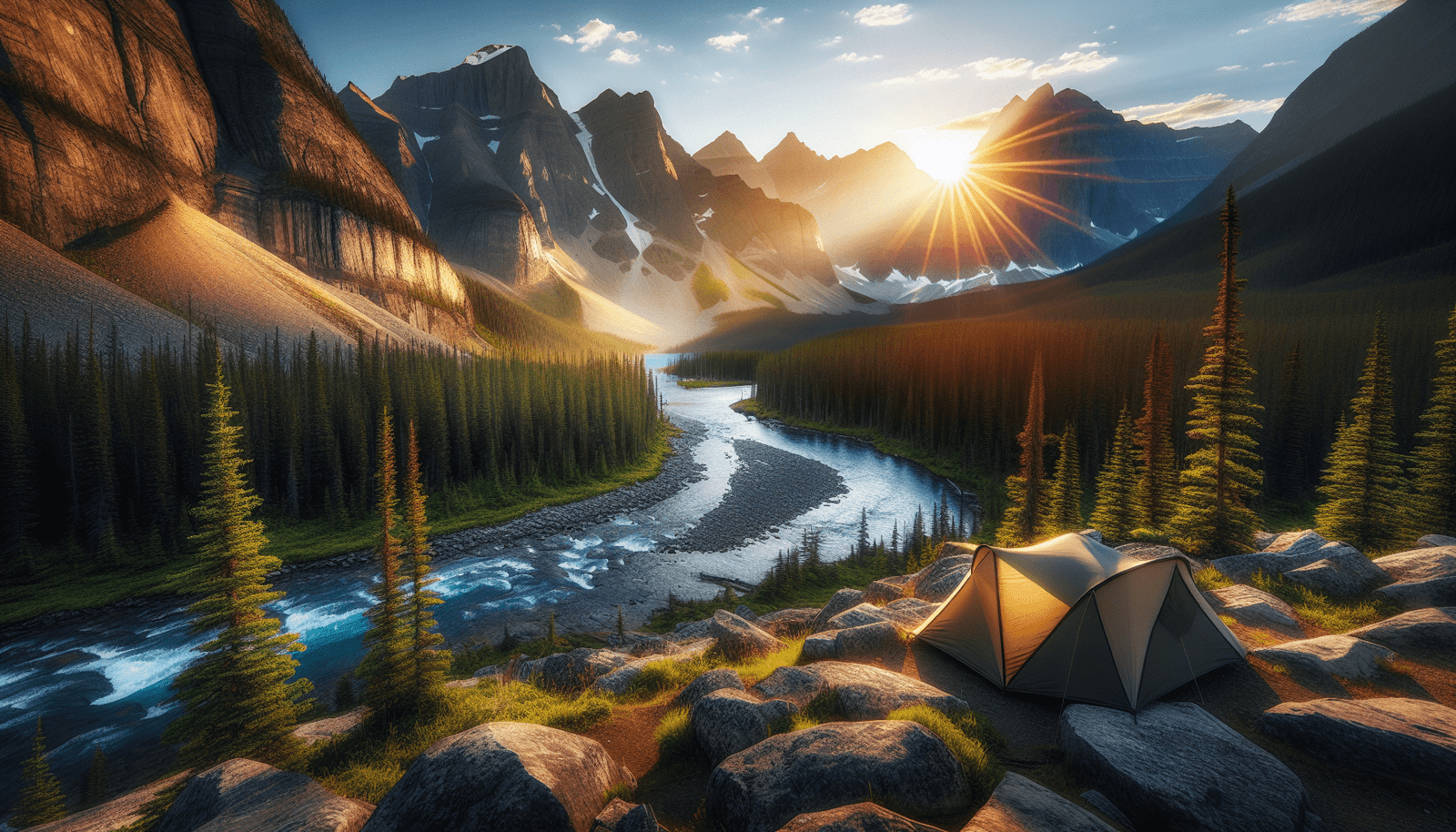Can You Camp Anywhere In The Rocky Mountains?” dives into the majestic allure of the Rockies and brings to light the essential rules and tips every adventurer needs to know. While the mountains promise breathtaking views and unforgettable experiences, not every spot is open for camping. This friendly guide helps you navigate through national park regulations, designated camping zones, and the unique differences between dispersed and backcountry camping, ensuring your adventure is both thrilling and compliant with local guidelines. Have you ever wondered, “Can you camp anywhere in the Rocky Mountains?” If you’re an adventurer at heart, the idea of pitching your tent in such a majestic setting is thrilling. However, the Rocky Mountains, with their expansive trails and diverse ecosystems, come with certain rules and guidelines that every camper should know.

Understanding the Lay of the Land
The Allure of the Rocky Mountains
The Rocky Mountains stretch over 3,000 miles from British Columbia in Canada down to New Mexico in the United States. They are renowned for their breathtaking landscapes, diverse wildlife, and outdoor recreational opportunities. Understanding the different regions can help you decide where you’d like to set up camp.
National Parks vs. National Forests
The Rocky Mountains encompass both national parks and national forests. While they may seem similar, the rules for camping in these areas can vary significantly. National parks such as Rocky Mountain National Park have designated campgrounds and stricter rules regarding where you can set up your tent. National forests, on the other hand, offer more freedom for dispersed camping, but still come with their own set of regulations.
Legalities of Camping in the Rocky Mountains
Permits and Reservations
In many parts of the Rocky Mountains, you will need a permit to camp. This is especially true in national parks and popular wilderness areas. It’s crucial to plan ahead and secure your permits and reservations, especially during peak seasons.
| Area | Permit Required? | Reservation Required? |
|---|---|---|
| Rocky Mountain National Park | Yes | Yes |
| Arapaho National Forest | Sometimes (depends on the zone) | Not always |
| San Juan National Forest | No | No |
Understanding Dispersed Camping
dispersed camping means camping outside of designated campgrounds. In national forests, this is often allowed, but you will need to follow specific guidelines. For instance, you must generally camp at least 100 feet away from any water source and stay at least a mile away from any trailheads or developed recreation sites.
Private Land and Wilderness Areas
Not all land in the Rocky Mountains is open to the public. Make sure you’re aware of boundaries between public and private lands. Also, be mindful that some wilderness areas have even stricter rules than national forests. Research ahead to avoid any legal trouble or fines.
Choosing a Campsite in the Rocky Mountains
Safety First
When selecting your campsite, safety should be your top priority. The Rocky Mountains are home to various wildlife, including bears and mountain lions. Properly storing your food and choosing a location away from common wildlife paths can minimize risks.
Leave No Trace Principles
The beauty of the Rockies is undeniable, and it’s up to every camper to preserve it. Follow the Leave No Trace principles to minimize your impact on the environment. This includes packing out all trash, minimizing campfire impacts, and being considerate of other visitors.
Weather Considerations
The weather in the Rocky Mountains can be unpredictable. Always be prepared for sudden changes, including cold snaps, rain, and snow, even in the summer. Make sure your camping gear is suitable for a variety of conditions.
Must-Visit Camping Spots in the Rocky Mountains
Rocky Mountain National Park
One of the most popular destinations, Rocky Mountain National Park features several designated campgrounds. While these tend to fill up quickly, the scenery is worth the effort of planning ahead.
Highlight Campgrounds:
- Aspenglen Campground
- Glacier Basin Campground
Indian Peaks Wilderness
Less crowded but equally stunning, this area offers numerous lakes and high-altitude trails. Permits are required for overnight stays.
Popular Spots:
- Blue Lake
- Pawnee Lake
San Juan National Forest
A haven for dispersed campers, San Juan National Forest offers various terrains, from alpine meadows to dense forests.
Suggested Areas:
- Ice Lakes Trail
- Highland Mary Lakes
Essential Camping Gear and Preparation
What to Pack
Proper packing is essential for a successful camping trip in the Rocky Mountains. Here’s a checklist to get you started:
| Essential Gear | Optional but Useful |
|---|---|
| Tent and sleeping bag | Portable GPS |
| Cooking supplies | Fishing gear |
| Water filtration system | Camera for photography |
| First-aid kit | Binoculars for wildlife spotting |
| Map and compass | Reading material for downtime |
Emergency Preparedness
Being prepared for emergencies is crucial. Familiarize yourself with basic wilderness first-aid and always let someone know your planned route and expected return time. Carry a personal locator beacon if you’re venturing into more remote areas.
Activities to Enjoy While Camping
Hiking and Backpacking
The Rocky Mountains are a hiker’s paradise, offering trails for all experience levels. From short day hikes to multi-day backpacking treks, there’s something for everyone.
Fishing and Boating
Numerous lakes and rivers provide excellent fishing opportunities. Some areas also allow boating, but be sure to check local regulations.
Wildlife Watching
The Rocky Mountains are teeming with wildlife. Bring a good pair of binoculars to spot elk, moose, eagles, and even the occasional bear from a safe distance.
Stargazing
Away from city lights, the Rocky Mountains offer some of the clearest views of the night sky. Don’t forget to bring a star map or stargazing app to make the most of your experience.
Tips for a Memorable Camping Experience
Plan Ahead
Given the popularity of camping in the Rocky Mountains, advance planning can make all the difference. Secure your permits, plan your route, and make a checklist to ensure you have all necessary supplies.
Respect Wildlife
Always observe wildlife from a distance. Never feed animals and keep your camp clean to avoid attracting unwanted visitors.
Stay Informed
Weather conditions and regulations can change. Stay informed by checking official websites and contacting local ranger stations for the most current information.
Final Thoughts
Camping in the Rocky Mountains is an experience like no other. With a bit of preparation and respect for the environment, you can enjoy the majestic landscapes and return home with unforgettable memories. So, can you camp anywhere in the Rocky Mountains? The answer is no, but with the right information and planning, you can find the perfect spot that meets all guidelines and offers an incredible outdoor adventure. Happy camping!
